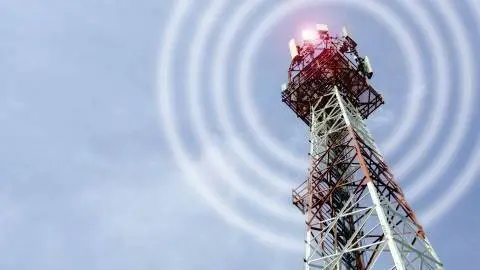Telecom Outlook: Is satellite or 5G technology the answer to rural broadband woes?
With almost a quarter of US adults having no home broadband, new technologies are being scaled up
The technology behind broadband
The European Commission talks about the importance of broadband access everywhere in Europe. This is good since it is a technology-agnostic strategy. There is a need for rural broadband. According to the Pew Research Center, only 77% of US adults had access to broadband internet in February 2021. Fibre may be expensive, but, fortunately, there are other solutions. The first uses mobile technologies to provide homes with fixed broadband, the so-called Fixed Wireless Access (FWA). Basically, this technology facilitates the provision of fixed broadband services to households using wireless technologies. The second technology used to provide broadband services to remote areas is satellite.
Both existing technologies are being scaled up, but new products have also been launched using recent technologies involving low earth orbit (LEO) satellites. What both technologies have in common is that they reduce the need to roll out fibre everywhere, particularly in places where it is prohibitively expensive or impossible, for example in mountainous areas. Both technologies could also be sold as a backup technology and provide scope for increased revenues due to a larger addressable market. For consumers (and businesses), this would enhance the reliability of services, while it would also fulfil a need in remote areas. We expect, however, that the addressable market is too small for multiple operators and solutions. We anticipate FWA to become the dominant technology to connect remote places, while there is probably an opportunity for one or two satellite solutions, possibly in combination with other services.
Fixed wireless access: what is it and who's using it?
Telecom operators have experimented with mobile technologies to provide homes with a fixed internet connection. FWA options have come out of the testing phase in the USA. In many cases, the technologies provide a good alternative to broadband services based on DSL (Digital Subscriber Line) technologies. Also, FWA is an opportunity to connect areas where previously no broadband was available. In some areas it is very expensive to roll out fibre and operators may choose to rely on mobile solutions to provide broadband coverage in these areas. For mobile operators that historically did not have a fixed network, the technology provides an interesting way to compete with traditional broadband operators, especially as the traditional fixed operators try to grow their mobile customer base.
Speeds on fixed wireless access connections vary between 40Mbit and 300Mbit, depending on the proximity of an antenna and the number of users. New 5G technologies enable superfast broadband connections especially if an operator has the right spectrum. Today, FWA Technology is used by many operators, such as T-Mobile, Verizon and AT&T in the USA, Telstra and TPG in Australia, Fastweb in Italy, while Deutsche Telecom is testing the technology in Germany. In Ireland, Imagine Communications Group is selling the technology.
The solutions are making inroads now. T-Mobile USA already had FWA available to 30m households in April 2021. They had an initial target of 500,000 customers by the end of 2021 and 7-8m customers by 2025. They are now ahead of the 2021 target with a reported 646,000 High-Speed Internet customers. Verizon had FWA access available to 11.6m households at the end of 3Q21, while it's targetting 15m households by the end of 2021, 30m households by the end of 2023, and 50m by the end of 2025. At the moment, Verizon has 150,000 FWA customers. AT&T has a relatively slow, legacy, FWA product, but does not disclose clear plans to upgrade to 5G-based FWA. Telstra in Australia has a product that it markets as a broadband alternative, although this offer is limited to a set number of households in a specific area. TPG has a (relatively slow) FWA product as well in Australia. Previously, Telstra talked about the technology as a backup solution, in case there are issues connecting to the wired internet connection of the national broadband operator. According to Telstra, this backup solution provides them with a competitive edge. Deutsche Telekom is testing a hybrid offering, complementing wirelines with a mobile connection. This way customers can benefit from higher speeds and better reliability.
FWA solutions are definitely making inroads. For mobile operators, they provide new avenues for growth. Also, they could close the digital divide between citizens with high-quality internet connections and the many households in rural areas, where internet connections are very slow or absent. However, there are also broadband solutions through satellite.
Out of this world: new satellite solutions to launch in 2022
Traditional geostationary-orbit satellite (GEO) constellations already provide broadband solutions at consumer prices, but the existing technologies have become too slow by today’s standards, while the uplink capabilities have been dismal. New European broadband constellations from Eutelsat and SES (O3b), however, will be launched in 2022. They are based on very high throughput satellite technologies (VHTS), replacing high throughput satellite technologies. Eutelsat will launch its Konnect VHTS satellite in 2022 and already has distribution agreements with Orange, Deutsche Telekom and Telecom Italia for the consumer market. SES will launch the first O3bmPower satellite in 2022 and will predominantly target high bandwidth solutions, such as cruise ships, governments and backhaul solutions for telecom operators.
When designing the commercial setup of the satellites, and the use of their total capacity, operators have to balance two factors: individual speeds and the number of subscribers. The total capacity of some new satellites is large and they are not likely to run into capacity issues in the near term. Very little is known, however, about the specific products being launched, the provided bandwidth and profitability. Press releases from Orange and Telecom Italia point to download speeds of 100-200 Mbit/second. We expect more clarity on commercial terms and technical capabilities throughout 2022. In the following paragraphs, we will compare the VHTS technologies with other innovative satellite solutions.
Elon Musk leads the way with innovative satellite solutions
Novel LEO satellites also promise to deliver broadband solutions to remote areas. LEO solutions will bring broadband connection with low latency. Elon Musk’s Starlink venture is the most advanced and best-known company for this. Initial field trials with Starlink has shown performance rates of up to 200Mbit per second, although it is uncertain if Starlink can maintain these speeds with widespread use. Amazon has announced plans to roll out an LEO satellite network, dubbed Project Kuiper. This venture will team up with Verizon to provide a backhaul solution next to other services.
Also, OneWeb has plans for an LEO satellite constellation. At the moment it is backed by Bharti Enterprises, the UK government, Eutelsat and Softbank. The operations of OneWeb seem to be delayed by a shortage of customer equipment. Note that there are also a couple of smaller LEO initiatives by Inmarsat, Telesat and others. The Telesat network plans look particularly promising, given the company's long experience in the satellite industry, but also because the constellation requires fewer satellites than Starlink. Compared to geostationary satellites, LEO satellites have the advantage of lower latency as well as lower launch costs. An important advantage is also the robustness of the network, which is an advantage for the military. It is much easier for adversaries to disrupt one geostationary satellite than a network of LEO satellites that include backup systems.
There are also drawbacks to LEO satellite systems; they travel at high speeds through space and therefore many satellites are required to provide continuous coverage. Plus, the cost of launching a full network is high. Musk mentions that the Starlink network could cost up to $30bn. Given annual revenues per customer of $1,188 (12 months of $99), Starlink would need quite a few customers to recover its costs. If one assumes 25% operating costs and a ten-year depreciation of its network launch costs, Starlink needs 3.37m customers to break even ($3bn annual investment costs, divided by revenue, minus operating costs of $891). With annual subscriber numbers of 145,000, Starlink is not there yet. But this does not factor in potential income from government subsidies, revenues from wholesale contracts, revenues from IoT connections or revenue from contracts with departments of defence. Some question the physical ability to generate these additional revenues, since there is already some talk that initial high speeds drop if more users get added to the Starlink satellite network.
Will these satellite systems be a success?
This will be the year that provides us with much more clarity about the physical and commercial success of both LEO and MEO (medium Earth orbit) / GEO systems. Comparing the two systems, MEO/GEO systems have the ability to better steer capacity, something that matches the needs of humans, who often flock together. Besides competition between the different satellite systems, there is also the launch of FWA solutions, which removes parts of the total addressable market. The success of mobile broadband solutions also has to be taken into account when evaluating the prospects of satellite systems. Given the many prospective operators in the satellite space, we deem it unlikely that all will succeed. Due to the difficult profitability prospects for Starlink and very high launch costs, it seems unlikely today that multiple LEO operators can succeed with their plans. We do acknowledge, however, that this is a quick, back-of-the-envelope calculation. MEO/GEO systems will target cruise ships and planes, which is a natural market opportunity for them. Could a GEO system also be complemented by an LEO constellation? And will we see mergers among satellite operators in 2022 to reach increasing scale benefits? Maybe the stake bought by Eutelsat in OneWeb is the beginning of a new business model. We will likely know more by the end of the year.
Download
Download article
28 January 2022
Telecom Outlook 2022: innovation and M&A This bundle contains {bundle_entries}{/bundle_entries} articlesThis publication has been prepared by ING solely for information purposes irrespective of a particular user's means, financial situation or investment objectives. The information does not constitute investment recommendation, and nor is it investment, legal or tax advice or an offer or solicitation to purchase or sell any financial instrument. Read more
